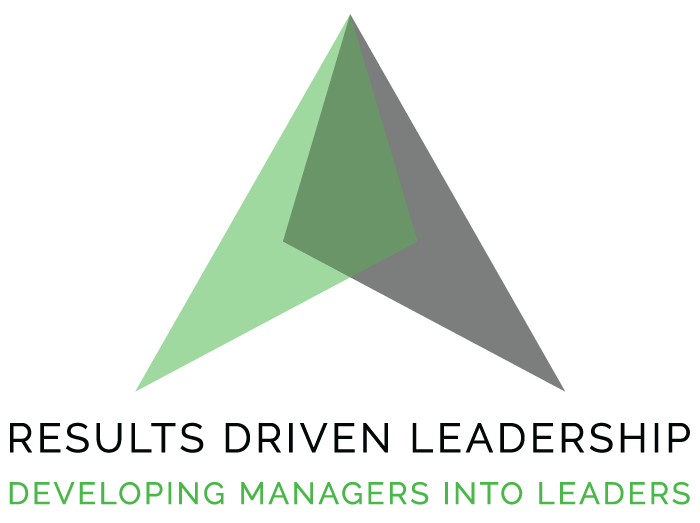TABLE OF CONTENTS
Do you have a superstar employee who is capable of great things, but you are not sure they can be a good leader?
What actions must you take to find out and make a solid bet on the future? What do you need to start developing them? In this blog, I will share all the tips for helping your superstar employees fulfill their potential.
What do high-potential employees describe as their core challenges? And what areas of development must they address as they climb the career ladder?
We will explore how to recognize and nurture high-potential employees, analyzing the best leadership practices and management approaches necessary for success. Join us as we uncover what makes good leaders great!
We will share insights based on our experience on what they need to support their growth. These insights will help determine how executives, business owners and managers can assist their fast-track employees in reaching their full potential and also how they can help shape the design and implementation of leadership development programs.

Key Challenges Facing High Potentials
Over the course of nearly 30 years, the potential of our program has been consistently identified as five consistent leadership challenges:
- Leading teams
- Leading change
- Leadership style
- Leading at scale
- Driving business results
High potentials often find themselves faced with the daunting task of leading a unique, diverse team. From executives to regular workers, each person is motivated in different ways and requires an individualized approach that can be difficult to navigate at first. However, mastering this artful balancing act offers immense rewards as teams come together under experienced leadership.
From face-to-face to virtual, leading global teams has become an increasingly daunting task for high potentials. However, those open and eager enough will find ways to manage complex backgrounds successfully and varying motivation levels among team members in our everchanging world – there’s no quick fix but with a bit of creativity one can discover a solution!
Women and men may grapple with similar leadership issues, but women seem to struggle with their management style particularly. One woman described her challenge: “I tend to be overly directive which can make me come across as domineering and too parental. I’m respected in my role, yet want people around me driven by encouragement rather than fear.” Such a concern is well-versed among many female leaders striving for success while maintaining workplace harmony.
The switch from individual contributor to team leader is a complex transition and can’t be done simply with past experience. Research has shown that two essential elements are needed for greater success: an eagerness to achieve results and technical expertise. But reaching higher levels of accomplishment also requires the ability to shift focus away from personal achievement towards inspiring collective performance for career goals to become a reality.
In 2023, high potentials are met with a unique challenge: leading teams that span remote boundaries. It’s not easy to guide each individual while aligning core objectives – an obstacle felt by many this year. But it is possible for leaders to find the perfect balance between enabling employees and achieving success as one united entity.
Use objectivity to determine if your gut is right for your high-potential employee. DISC can be a valuable tool for confirming that a high-potential employee is a good fit for a leadership role. Here are some steps you can take to use DISC for this purpose:
What is DISC?
DISC is a personality assessment tool that can be used to identify an individual’s behavior style. The tool categorizes individuals into one of four behavior styles: Dominance, Influence, Steadiness, and Conscientiousness. Here are some ways that you can use DISC to identify ways to grow and develop high-potential employees:
Identify an individual’s behavior style: Use the DISC assessment to identify the behavior style of your high-potential employees. Understanding an individual’s behavior style can help you tailor your approach to their development.
Compare behavior style to leadership requirements: Identify the behavior styles that are typically successful in a leadership role. For example, individuals with high Dominance and Influence tend to excel in leadership roles because they are decisive and can inspire others. Compare the high-potential employee’s behavior style to these requirements to see if there is a match.
Using DISC to benchmark a high-potential employee can help you identify if they have the right leadership qualities for success. Here are some steps you can take:
Determine the benchmarks: Identify the leadership qualities and behaviors critical for your organization’s success. This can include communication skills, decision-making abilities, adaptability, and conflict-resolution skills. Compare the high potential DISC to any existing managers who are your most effective. Maybe even your own.
Conduct a DISC assessment for your high potential: Administer a DISC assessment to the high-potential employee. This will help you understand their behavior style and provide insights into their natural tendencies.
Compare behavior style to benchmarks: Compare the high-potential employee’s behavior style to your established benchmarks. For example, if effective communication is a critical leadership quality, look at the employee’s communication style and how it aligns with the communication benchmark.
Identify strengths and areas for improvement: Use the DISC assessment to identify the high-potential employee’s strengths and areas for improvement in relation to the benchmarks. For example, if the benchmark for decision-making skills is high, but the employee has a tendency to be indecisive, this could be an area for improvement.
Provide targeted development: Use the insights gained from the DISC assessment and benchmarking process to create a targeted development plan for the high-potential employee. This plan should focus on building on their strengths and addressing their areas for improvement in relation to the benchmarks.
Monitor progress: Monitor the progress of the high-potential employee over time. Use the benchmarks to evaluate their progress and make adjustments to their development plan as needed.
In summary, by using DISC to benchmark a high-potential employee, you can identify their strengths and areas for improvement concerning the leadership qualities and behaviors critical for success in your organization. This can help you provide targeted development to support their growth as a leader.

Next, you need to consider the job requirements.
Look at the specific requirements of the leadership role for which the high-potential employee is being considered. Use DISC to identify how the employee’s behavior style aligns with those requirements. For example, an employee with high Influence may be a good fit if the role requires someone who can communicate effectively with diverse stakeholders.
Conduct a behavioral interview: Ask questions during the interview that help you understand how the high-potential employee’s behavior style will align with the leadership role. For example, ask how the employee typically communicates with their team, how they handle conflict, and how they make decisions.
Look at the specific requirements of the leadership role for which the high-potential employee is being considered. Use DISC to identify how the employee’s behavior style aligns with those requirements. For example, an employee with high Influence may be a good fit if the role requires someone who can communicate effectively with diverse stakeholders.
Conduct a behavioral interview: Ask questions during the interview that help you understand how the high-potential employee’s behavior style will align with the leadership role. For example, ask how the employee typically communicates with their team, how they handle conflict, and how they make decisions.
Hiring or promoting someone for a leadership role without using a DISC assessment can be a bad idea for several reasons:
Limited understanding of their behavior style: With a DISC assessment, you may have a greater understanding of the individual’s behavior style. This can make it difficult to evaluate their fit for a leadership role and to tailor their development plan to their strengths and weaknesses.
Difficulty in predicting their performance: By not using a DISC assessment, you may be less able to predict how the individual will perform in a leadership role. This can lead to poor decision-making and a higher risk of selecting an unsuitable candidate.
Difficulty in creating a high-performing team: You may need to use DISC to evaluate an individual’s behavior style to be able to create a team with complementary strengths and weaknesses. This can lead to a team that is not as effective or efficient as it could be.
Higher turnover rate: If you hire or promote someone for a leadership role without using DISC, you may find that they are not a good fit for the role, leading to a higher turnover rate, disengagement and reduced productivity. It just creates a mess that lingers and damages more than you will ever realize. This can be costly for the organization in terms of time, money, and resources.
Minimize Making Mistakes In Selection
The failure rate of newly promoted managers can vary depending on various factors, such as the industry, the organization’s culture, the level of support provided, and the specific requirements of the manager role. Some studies suggest the failure rate can be as high as 50% in the first 18 months.
According to a study conducted by CEB Global, a research and advisory firm, nearly 60% of new managers fail within the first 24 months of their appointment. The study also found that the main reasons for the failure of new managers were poor interpersonal skills, inability to build and lead a team effectively, and lack of understanding of the organization’s culture and politics.
It’s important to note that while failure rates can vary, organizations can take steps to mitigate the risk of new manager failure. This includes providing proper training and support, setting clear expectations, and ensuring the new manager’s behavior style and strengths align with the role’s requirements.
Missed development opportunities: You must use DISC to identify an individual’s strengths and areas for improvement to ensure you are able to gain valuable development opportunities that could help them grow and succeed in a leadership role.
Evaluate their growth potential: Consider how the employee’s behavior style may impact their potential for growth in a leadership role. For example, if the employee has a high Conscientiousness score, they may be focused on details and may need to work on delegating tasks in order to be an effective leader.
In summary, by using DISC to assess the high-potential employee’s behavior style, comparing it to leadership requirements and job requirements, conducting a behavioral interview, and evaluating their growth potential, you can confirm whether or not they are a good fit for a leadership role.

What Got You Here Will Not Get them There.
The transition from an employee to a team leader is quite challenging. In the last twenty years, we’ve identified two essential strengths that are able to achieve results and technical or functional knowledge — as the main factors in identifying and recommending employees as high-potential employees.
To get to the next stage, high potentials who’ve received recognition for their own achievements need to learn to adjust their defined definition of success based on the team’s collective performance. Reliance on past performance won’t suffice as high-potentials struggle with the scope, size, and complexity of higher-level general management positions.
Moving up to leadership roles at higher levels is a process that requires six core abilities:
- How to Hire Great People
- How to be an Inspiring Leader
- Strategic Leadership
- Effective Communication Skills, including How To Have Difficult Conversations.
- How to Train and Develop Their Team
- Time Management
I’ve just released my newest eBook on the Roadmap to Difficult Conversations. Visit Amazon the button below to receive a free copy.
How Organizations Can Develop High Potentials
Now that you are confident that you have identified your high-potential employee, how do you develop their skills?
In identifying ways to make sure that their top performers fulfill their promises, they should be ready to provide them with the capacity to think and think more strategically and lead with more certainty, as well as develop and strengthen relationships.
There are three key priorities that organizations should consider when they seek to maximize their high-potential employees.
Examine High Potentials for Specific Abilities to Help Them Develop
Many high potentials have had experience in managing tiny teams. Their next move will likely be to lead larger teams. This next step is where I see many struggles. When high-potentials move up to leadership at a higher level and scale, they must establish the conditions to allow the team to function efficiently without their presence.
This means establishing the leadership mindset and protocols to reward positive behavior while fostering and sustaining a healthy and vibrant environment and setting up a framework that encourages team members to become less dependent on them and to work and make decisions independently. In other words, avoid the “Command and Control” approach to managing, which fails 100% of the time in one way or another. Listen to my podcast on “3 Categories of Management Styles Which is Yours? For more information.
Managers can aid in this endeavor by keeping track of high-potential performance against the most critical leadership skills, including managing teams, building relationships and communication. Particularly, the capacity of high potentials to lead effective teams that inspire and motivate their team members and present a compelling vision is contingent upon their ability to communicate effectively. While they might be effective at small-scale team meetings or individual interactions, they must also excel in communicating across a large scope. This requires confidence in their convictions, and clarity.
Improve Your Leadership by Increasing Psychological Intel
As they advance within their profession, they frequently rely on others to complete the job, which requires trust, support and direction. It’s all about emotional intelligence. Empathy and self-awareness are two fundamental elements of emotional intelligence crucial for those with high potential. Numerous research studies have found connections between self-aware leaders and an open and supportive environment. They are also productive. Therefore programs and activities that help individuals with high potential to improve their self-awareness are crucial. This is accomplished by feedback, assessments, role play, and video recordings.
Alongside self-awareness, Empathy is the foundation of the ability to deal with conflict effectively, instruct and guide employees, and inspire and motivate others. However, despite its virtues, empathy is often the result of an excessive focus on the results and accomplishments. In contrast, empathy decreases when one progresses in the hierarchy; it’s when it is needed most in the context of in the lead rather than doing.
Many believe that empathy is a trait that you either possess or don’t have. We believe it is something that can be developed. It takes work to make changes in behavior. The DISC Profile will tell you if they can or not. The one essential skill we teach is active listening, how to have difficult conversations and showing genuine concern.
Help to foster a positive mindset for learning.
The transition from a fundamental technical or field of expertise to a broad management position requires a high level of ability to comprehend how the various functions work together. Leaders have a lot to gain from cultivating contextual intelligence – the capacity for sensing and adapting their approaches according to various situations. This calls for pushing past one’s comfort zone, embracing an open learning mindset, and growing past their existing boundaries to reach their full potential.
Companies that want to nurture and develop a learning mindset in their employees must create an atmosphere of safety, curiosity, risk-taking and exploration. They can support this by allowing promising individuals to work on new projects outside their field and engage them in scenario planning and market/product expansion analysis. By doing so, they will be providing invaluable experiences which could help unlock untapped potential!
Organizations are investing in their best and brightest employees by recognizing them as high-potentials with performance-oriented work ethics. To ensure these candidates reach their full leadership potential, it is necessary to provide coaching and assistance and opportunities for growth that recognize the importance of emotional intelligence, communication skills and relationship building. Managers must encourage a culture open to learning so the highest performing individuals can actively take advantage of development offerings – setting themselves up for success down the road!
Every business has superstars – employees who continually outdo themselves, provide impressive results, and possess the capacity to do extraordinary things. But, despite their talents and capabilities, most of them may become unmotivated, bored and eventually disengaged when their potential isn’t fully realized.
As a leader, you must ensure your superstars receive the opportunities and support they require to achieve their potential.
Unlock the potential of your high-potential employees with Results Driven Leadership! Our experienced coaches and trainers have deep expertise in developing talented people, so you don’t have to spend hours worrying about training methods or monitoring progress. Let us take on this burden for you – we’ll create a personalized solution that fits your budget without sacrificing quality. Reach out today and see how our unique services can help unleash success within your organization!






